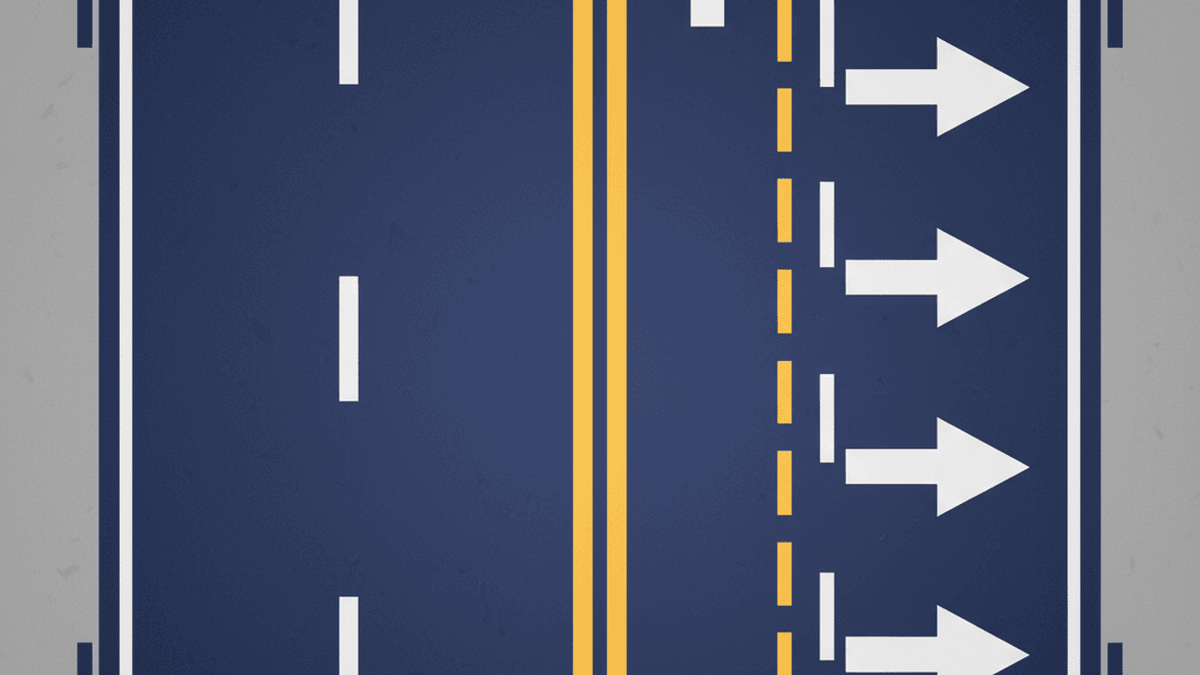Double Solid Yellow Lines

No-passing meaning of double solid yellow centerlines
Two parallel solid yellow lines separate opposing traffic and indicate that passing is prohibited in both directions. Drivers must stay on their side of the centerline and may not use the oncoming lane to overtake.
Solid vs broken centerline rules for passing and overtaking
Yellow lines manage opposite-direction traffic: a broken yellow permits passing when clear; a solid yellow prohibits passing. When the pattern is mixed, only the side with the broken line may overtake.
Mixed pattern: solid on your side vs oncoming side
If the solid line is on your side, you may not pass. If the broken line is on your side, you may pass when safe and legal.
How to read lane proximity at a glance
Glance for the closer line: if the solid line is nearest, do not pass; if the broken line is nearest, passing may be allowed when sight distance and conditions permit.
DMV exam phrasing for double yellow
Exams often say: "Two solid yellow lines indicate no passing in either direction." Watch for trick wording about mixed patterns and "no passing on your side."
When crossing is allowed without "passing"
Left-turn across double yellow into a driveway
Most states allow a single, controlled crossover to turn left into a driveway or private road when safe, yielding to oncoming traffic and pedestrians. This is not considered passing. See You may cross a double solid yellow line.
Avoiding an obstruction under traffic control
When a lane is blocked (crash debris, stalled vehicle, work zone), some states permit briefly crossing the centerline to go around if the way is clear and no signage prohibits it. Reduce speed and return promptly.
Coordinating markings with the W14-3 NO PASSING ZONE sign
Centerline markings are reinforced by signage. The triangular W14-3 NO PASSING ZONE sign typically appears at the start of the no-passing zone and faces the traffic to which it applies. Learn more at NO PASSING ZONE (W14-3).
